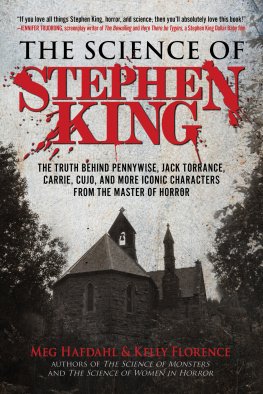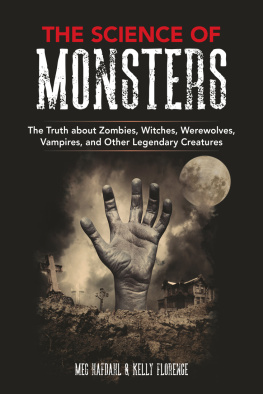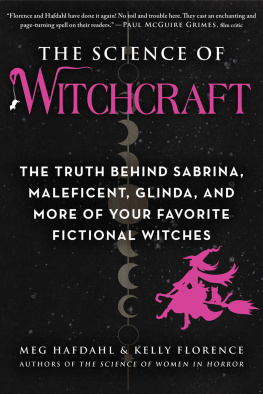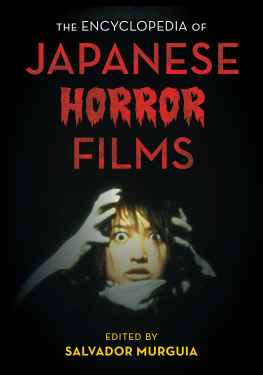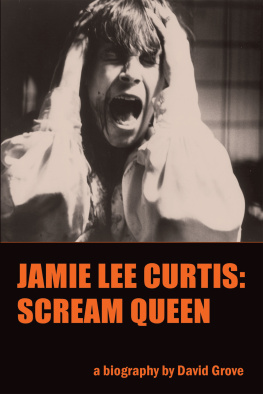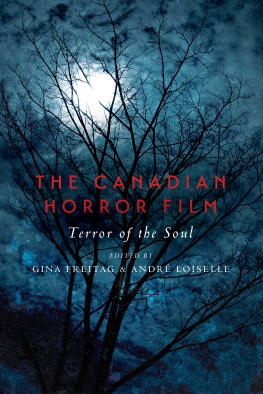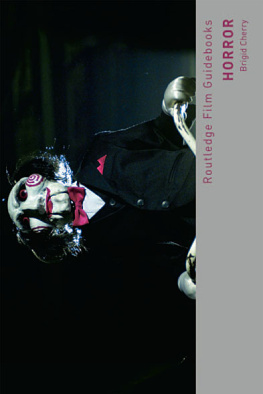


Copyright 2020 by Meg Hafdahl & Kelly Florence
All rights reserved. No part of this book may be reproduced in any manner without the express written consent of the publisher, except in the case of brief excerpts in critical reviews or articles. All inquiries should be addressed to Skyhorse Publishing, 307 West 36th Street, 11th Floor, New York, NY 10018.
Skyhorse Publishing books may be purchased in bulk at special discounts for sales promotion, corporate gifts, fund-raising, or educational purposes. Special editions can also be created to specifications. For details, contact the Special Sales Department, Skyhorse Publishing, 307 West 36th Street, 11th Floor, New York, NY 10018 or .
Skyhorse and Skyhorse Publishing are registered trademarks of Skyhorse Publishing, Inc., a Delaware corporation.
Visit our website at www.skyhorsepublishing.com.
10 9 8 7 6 5 4 3 2 1
Library of Congress Cataloging-in-Publication Data is available on file.
Cover design by Peter Donahue and Daniel Brount
Cover photograph by gettyimages
Print ISBN: 978-1-5107-5174-3
Ebook ISBN: 978-1-5107-5176-7
Printed in the United States of America
We dedicate this book to the women who slayed monsters long ago.
CONTENTS
INTRODUCTION
It is said that a nineteen-year-old girl invented the modern horror genre. Frankenstein , borne of the imagination of Mary Shelley, posed a vital question to its readers, one that exists in nearly all horror movies today: Who is the true monster? The creator? The creature? Often, this search leads us down dark and terrifying corridors illuminated only by knowledge and science. These are the investigations that thrill us, that further our love of horror.
How do we, as women, reconcile the sometimes violent, misogynistic nature of the horror genre? How can we be fans of the problematic ways in which women are portrayed? The answer is in seeking out those films and television shows that give us the flawed, complicated, and real women we want to see on screen.
What do we want from our female characters? They dont need to be perfect. They dont necessarily need to kick ass. They dont need to make all the right decisions. We want to see a reflection of ourselves. The Science of Women in Horror explores the way women have been trailblazers and creators within the genre from its infancy and digs into the archetypes, social science, and history behind horror itself, all while speaking with such notable female horror legends as Dee Wallace ( Cujo , E.T. ), Deborah Voorhees ( Friday the 13th: The New Beginning ), and Alice Lowe ( Black Mirror: Bandersnatch , Sherlock ).
Join us as we discover the scientific proof that ghouls rule!
SECTION ONE
THE MOTHER
CHAPTER ONE
PREVENGE
| Year of Release: 2016 |
| Director: Alice Lowe |
| Writer: Alice Lowe |
| Starring: Alice Lowe, Kate Dickie |
| Budget: $104,000 |
| Box Office: $94,100 |
Its alive! Frankensteins monster was birthed out of science and curiosity, fascination and discovery. Mary Shelleys hideous progeny of a novel was both the birth of the horror genre and of her, as a writer. Women are mothers in various forms. Whether they give literal birth or bring forth an artistic project, women are creators.
Pregnancy, and being a parent, are things that women have struggled with since the dawn of time. Women anguish over getting pregnant. If they cant, they feel that they have failed. If they can, they fear that they are doing things wrong and compare themselves to others. This phenomenon may be more prevalent in the time of social media but has existed since the Victorian era. According to the authors of Youre Doing it Wrong! Mothering, Media, and Medical Expertise :
The failed femininity thing is a constant message. You are always failing your femininity in a different way, so its a moving target. Some things have changed in that, in the Victorian age, the idea that you would work outside the home and you would not be a stay-at-home mom, is failed femininity. Now the conversation is much more barbed, because there are many women and people that identify as women that [work outside the home]. There can be defensiveness around this, and then the conversation looks
These complicated feelings of fear, regret, and worry regarding motherhood are present in horror literature, film, and television. Exploring the fears about pregnancy, specifically, are brought up in the first film discussed in this book.
There is something terrifying and godlike about making life, and its about time a woman owned that on screen. Anyone who has been pregnant or even been near a pregnant woman can tell you how strange it is to see the baby move, visibly, for the first time. Although it could be considered the most natural occurrence in nature, pregnancy seems almost otherworldly. A parasitic, unknown being inhabits a womans body and feeds off of her, influences her moods and emotions, and physically affects her entire life. Dramatic description? Perhaps. But for the mother in the movie Prevenge (2016), the baby affects all of these things and more.
Alice Lowe, who wrote, directed, and starred in Prevenge as the lead character, Ruth, completed filming in only eleven days of shooting. Any one of those accomplishments can be considered an incredible feat, but its even more extraordinary when we learn that she was actually pregnant while filming. The story follows a pregnant woman who is getting revenge on those she believes killed the father of her baby. This plot alone would be compelling enough, but add in the element of the unborn baby talking to and directing the mother to kill, and it makes for a horror movie like no other.
The longest time on record that someone has been pregnant is 375 days. Normally, pregnancy lasts around 280 days.
There are numerous examples of women filming while pregnant. Madonna famously filmed the musical Evita (1996) while pregnant, as did Gillian Anderson while working on The X-Files in 1994. Women on TV shows who are filming while pregnant in real life are often seen hiding their stomachs with laundry baskets or under bulky clothing. Neither of these tricks was needed for Prevenge . The character of Ruth was written to be very pregnant throughout the film. Lowe purposely shot quickly to avoid any continuity issues with her belly size and to avoid getting too tired while on set.
What inspired her to make this movie? Lowe was continuing to audition for projects and had aspirations to direct a feature-length film, but opportunities just werent coming to her. If youre a woman over thirty-five, no one is going to hand you a free pass. Things fell into place, and with funding from a production company guaranteed, Lowe realized she could use her pregnancy to her advantage and base the movie around it. She pitched it as a female Taxi Driver (1976):
Female characters are always mothers or girlfriends who provide some sort of network for the hero, who then goes out and does whatever he wants. But what about a woman whos cut off from society? Ruths philosophy is that society is selfish, and collectively [her victims] made a bad decision to destroy the love of her life [her husband, whose death we learn about via creepy flashback] and ruined the future of her baby.
Next page

